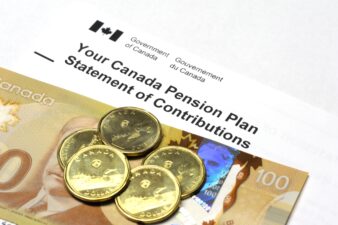Those high-multiple growth stocks that led the upward charge for most of 2020 are now reversing violently. Indeed, paying little to no attention to the valuation process paid off big in 2020 — a time where it paid to go with your instincts and chase what was “sexy” at the time. Undoubtedly, the so-called strategy of buying hot stocks was never meant to last. And in 2021, some chasers got burned by many of the high-growth stocks that proved too hot to handle. In the first few trading sessions of 2022, growth seems to be souring further, with losses accelerating for many of the pandemic winners — some of which have given up all of the gains posted in 2020.
Many beginner investors who chased performance have been hurt. Unfortunately, if you go by sheer price momentum or just a price-to-sales (P/S) multiple, you’re bound to take a big hit to the chin. Indeed, many newcomers have had to learn this the hard way, with some unprofitable growth stocks now nearing (or surpassing) 50% peak-to-trough losses.
High-multiple growth stocks taking amplified damage
Could losses intensify for such a group of overextended growth stocks that are now falling flat on their faces? It’s hard to tell. Higher rates are not good news for unprofitable stocks that only have future promises of earnings growth to go by. Lack of price-to-earnings (P/E) multiples or P/E ratios that are alarmingly high (think 50-100 times trailing earnings) are in the crosshairs these days. And it seems as though the trio of U.S. Federal Reserve rate hikes (and a fair number from the Bank of Canada) has yet to be baked in, given recent damage done to the tech sector in particular.
Remember, valuation always matters, especially when you think it doesn’t anymore. If a stock holds tremendous promise, but lacks on the earnings front, pay extra due diligence when conducting a discounted cash flow (DCF) model that peers many years into the future. We all want to be early shareholders of the next Shopify, but, as we learned in the aftermath of the 2000 dot-com bubble burst, not every unprofitable, albeit promising growth stock can rise out of the rubble once the growth trade goes out in smoke.
Yes, growth stories are worth getting behind, but ask yourself: At what price?
There’s no sense paying up for many years, if not decades’ worth of growth right off the bat. Even the fastest-growing, best company on the planet can be a “sell” if the price is not right or the valuation creates a risk/reward that’s less than favourable for investors seeking to make money over a long-term timespan.
The best part is, you don’t need to know how to value the hard-to-value growth stocks that are not only lacking in earnings but in financial history. It’d be nice to go back at least a decade to see the trend of revenues, margins, dividends, earnings, and all the sort. But for many of the “sexy” plays that went live on the exchange, that history just is not there for most investors.
Stick with profitable growth!
Instead of speculating on a story, consider profitable growth companies like Alimentation Couche-Tard or Brookfield Asset Management. Both names aren’t growing their top line at a 50% rate. That said, they are growing their bottom line at a solid and sustainable rate. The key is earnings growth sustainability. Nobody wants to hold a stock that’s gone from a 90% revenue growth rate to a 40% rate. Instead, with a name like Couche or Brookfield, you’re getting years of predictable, steady growth. That’s all you can ask for as an investor, especially in this climate!







